Review: Motorola Moto G5 Plus
Lock Screen
The Moto G5 Plus carries over Motorola's awesome always-on display. It's among the best lock screen treatments available and we (still) love it.
Notifications and other lock screen behaviors are managed from the Moto App. The Moto Display function in the Moto App can wake the screen regularly with a list of the current notifications; show important notifications on the lock screen as they arrive; or leave the screen entirely dark. The choice is yours. Double tap the screen to see the time, date, and battery life, as well as notifications in list form.
If you press the screen lock button, the display wakes fully to show the clock, wallpaper, and notifications listed below the clock. There are also shortcuts to the Google Assistant and camera on this screen. Sadly, you can't customize the shortcuts.
As far as security goes, the phone includes PIN, pattern, and password options, as well as the fingerprint reader.
The G5 Plus' fingerprint reader performed very well. It was quick to record fingerprints and consistent at recognizing fingerprints on the first try. As noted earlier, the fingerprint sensor doubles as a home and navigation button.
Home Screens
The G5 Plus ships with Android 7 Nougat and a thin user interface skin from Motorola. Owners can customize the typical stuff, such as wallpapers, widgets, and so on. The home screens behave as expected for an Android Nougat phone.
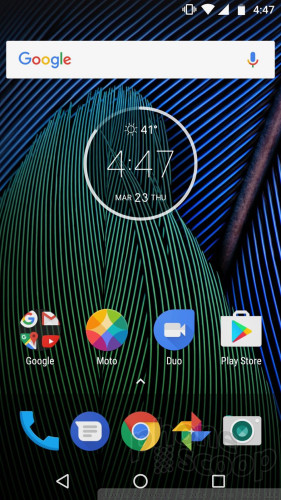
The app drawer is almost stock. It doesn't include a dedicated button on the home screen. Instead, you swipe up from the dock to bring up the app drawer, similar to Pixel phones. Apps are listed alphabetically in the drawer, with four app suggestions lining the top. The G5 Plus trades the white background found on Pixel phones for whatever wallpaper you have set for the home screen. The app drawer doesn't support folders, nor does it allow you to hide apps. The notification shade, Quick Settings tool, and main settings screens are all standard Android, and work accordingly. There are no themes or other fancy interface tricks on board, which is fine as far as I am concerned.
As for performance, the Moto G5 Plus jumps to a 2.0 GHz Snapdragon 625 processor. There are two variants: one has 2 GB of RAM and 32 GB of storage, and the second has 4 GB of RAM and 64 GB of storage. I tested the 4 GB version and it performed great. The 625 delivered consistent performance across the board. The phone never felt slow or sluggish. It's likely the variant with 2 GB of RAM won't feel as quick. (Given the choice, we always recommend more RAM.)
Camera
The G5 Plus does not have a dedicated physical camera button, but there are several ways to open the camera. The good-old wrist-twisting gesture that Motorola has included on its phone for years is still my favorite way to open the camera. Alternately, you can use the lock screen shortcut or home screen icon. The app opens swiftly.
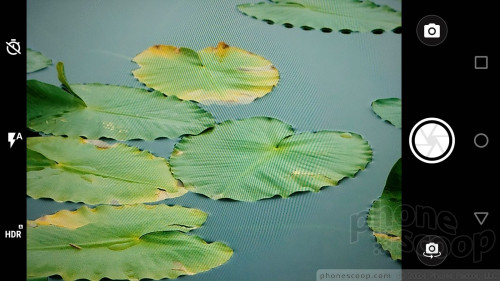
There are three controls on the left side of the screen (timer, flash, HDR) and three on the right (mode, shutter, front camera). I like that both the flash and HDR tools can be set to on, off, or auto.
As for shooting modes, the G5 Plus offers auto, video, slo-mo, panorama, and manual. The manual mode lets you take full control over focus, ISO, shutter speed, brightness, and white balance. The controls line the top of the screen and are easy to adjust. It's a shame the shutter only lets you select speeds as slow as one-third of a second; that's hardly long enough to get creative or take really great night shots. There's no 360 photo mode, which feels like an odd omission, nor is there any sort of GIF maker.
The default is always auto mode. Slide your finger up or down to zoom. Tap to focus and set exposure. Press the shutter button to take standard pictures, or press-and-hold to capture a burst. Swipe from the left side of the screen to access more minor settings such as grid-lines and resolution.
The layout is easy enough for novices to use effectively, and flexible enough in manual mode to unleash at least some degree of creativity. Still, were I to buy this phone, I'd probably download additional camera apps such as Google Cardboard and something with a time-lapse feature.
Photos/Video
The G5 Plus has what Motorola calls a “flagship-class” 12-megapixel sensor, with an impressive aperture of f/1.7. I was very, very happy with the pictures I snagged while testing the phone. Focus is typically sharp, white balance is accurate, and exposure is spot-on. Truly, the G5 Plus has a fine camera that dramatically outperforms that of last year's G series. The phone's HDR feature was able to handle high-contrast scenes, such as the trees below. The flash will help in low-light situations as long as you're close to your subject(s) indoors.
The 5-megapixel selfie camera isn't quite as good, but it still manages to take good self portraits on occasion. The biggest problem I noticed was grain in low-light situations. Otherwise focus, white balance, and exposure are generally decent.
The full HD video looked a bit lackluster to my eyes. It was grainy, soft, and just not what I expect from a modern smartphone. You can choose between Ultra HD, full HD at 60fps, full HD at 30fps, or 720p at 30fps. I didn't see much quality difference in the results.
Video aside, I think most people will be pleased with what they get from the G5 Plus' camera. I'd still use dedicated equipment for the most important stuff, but it suffices for an everyday shooter.


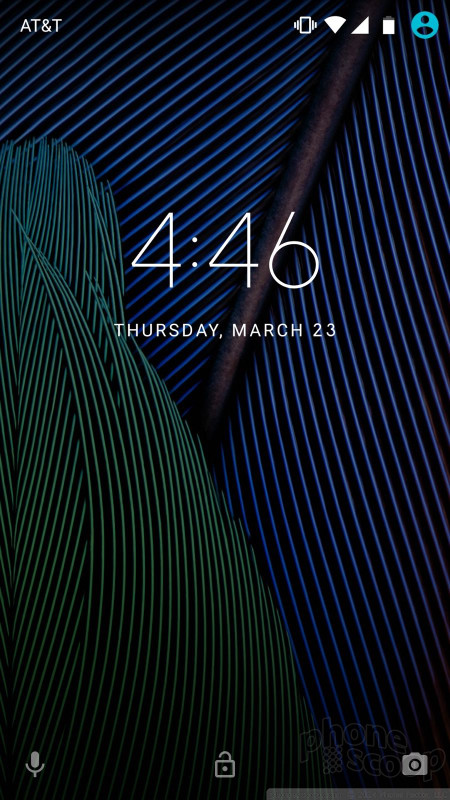














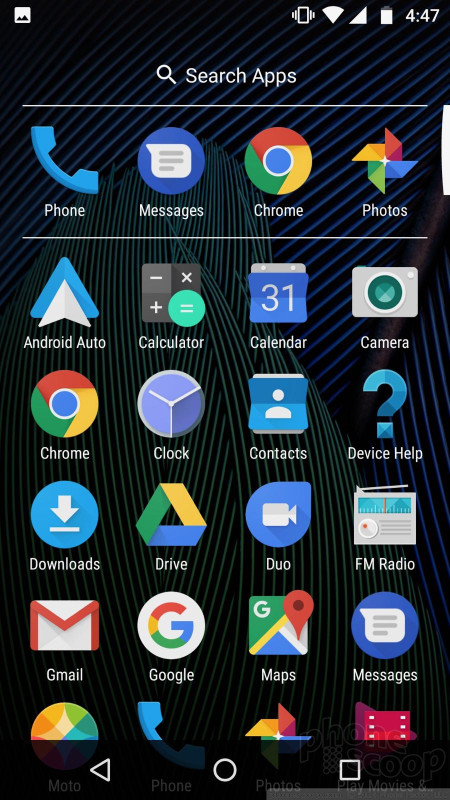










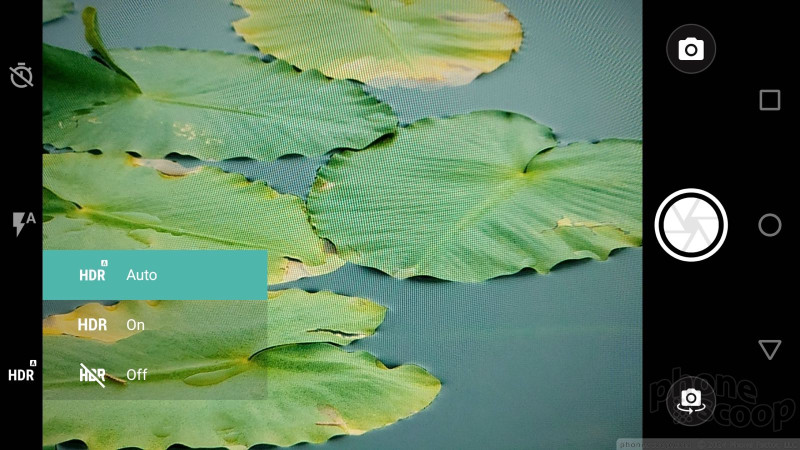



























 Top Five Budget Handsets of 2017
Top Five Budget Handsets of 2017
 Hands On with the Motorola G5 and G5 Plus
Hands On with the Motorola G5 and G5 Plus
 Consumer Cellular Picks Up the ZTE Avid 916 and Moto G5 Plus
Consumer Cellular Picks Up the ZTE Avid 916 and Moto G5 Plus
 Lenovo Says Bug Preventing Moto G Plus from Making 911 Calls On Verizon
Lenovo Says Bug Preventing Moto G Plus from Making 911 Calls On Verizon
 Moto G5 Plus Goes On Sale March 31 for $230-$300
Moto G5 Plus Goes On Sale March 31 for $230-$300
 Motorola Moto G5 Plus
Motorola Moto G5 Plus










